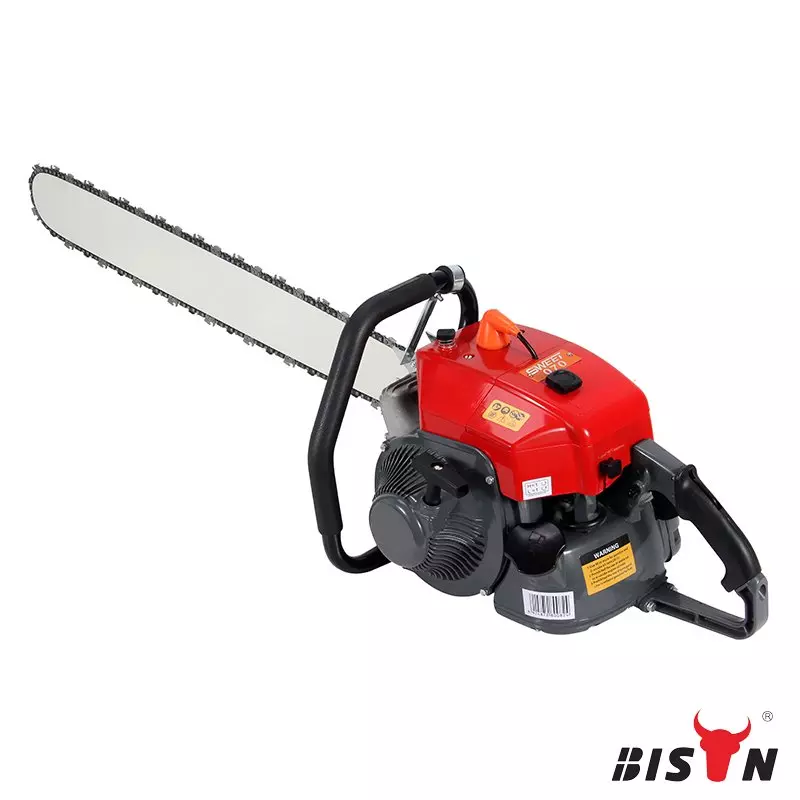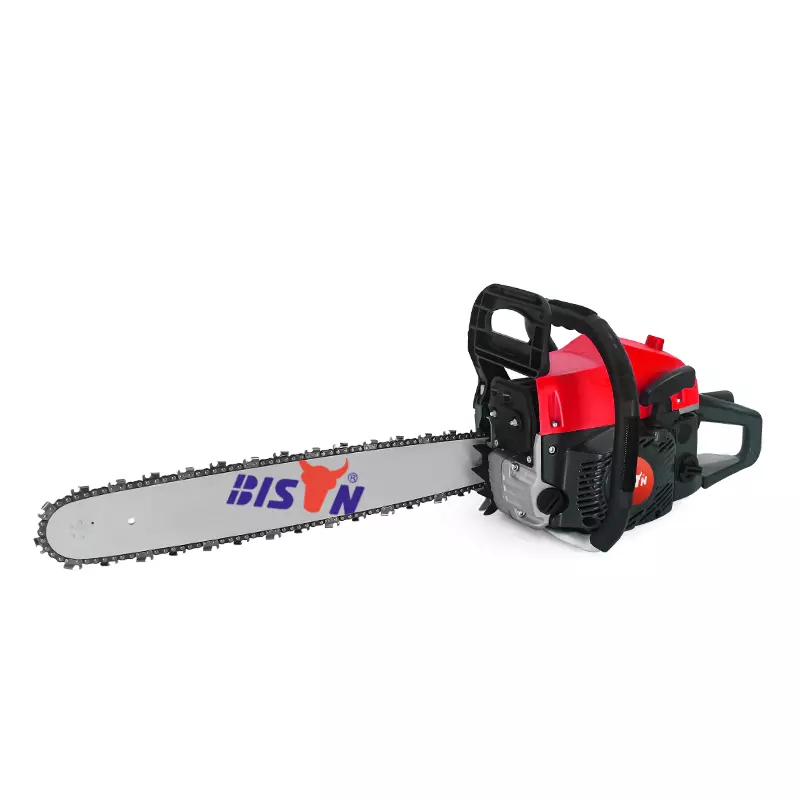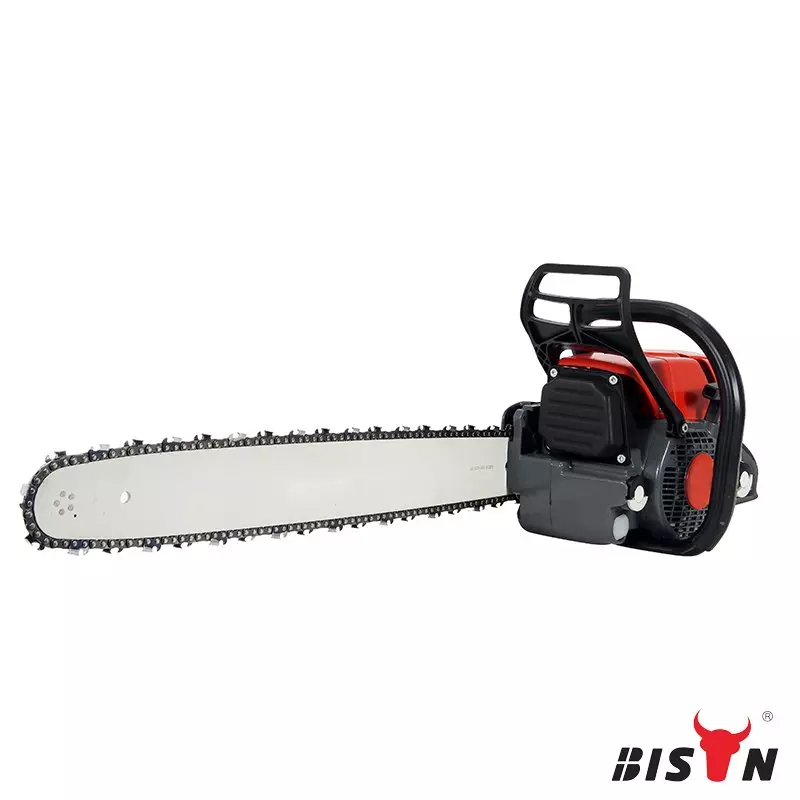how to choose a chainsaw chain
2023-07-21
Table of content
Chainsaw is a powerful and essential tool for many people, but its effectiveness depends on the chain it is equipped with. Choosing the right chainsaw chain is not only about ensuring optimum performance, but also about the safety and longevity of the tool.
At first glance, the world of chainsaw chains may seem complicated. There are tons of different chainsaw chain types. Various configurations of gauge, pitch, cutter material, cutter style, and chain arrangement create unique chainsaw chains. Each chainsaw chain type has different cutting characteristics for various machines and user skill levels. In this article, BISON will dive into the essentials of choosing the perfect chainsaw chain, helping you make an informed decision based on your specific needs.
Bar and chain guide
When choosing a chainsaw chain, you must first know the gauge, pitch, and number of drive links. Once you have that, everything else about options is what you like.
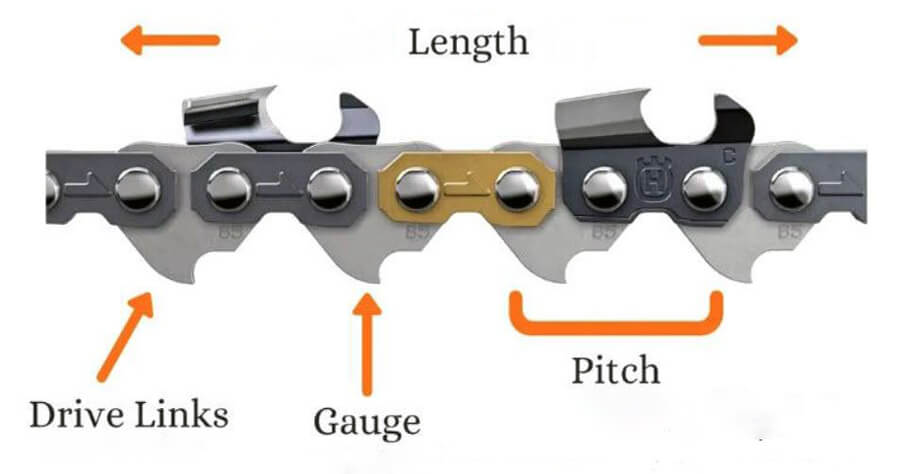
Pitch
Pitch is simply the average distance between two rivets on a saw chain. Its value 1/4", 3/8", .325", or .404" is usually displayed on the guide bar. To determine the pitch, measure the distance between three consecutive rivets and divide the result by 2. Rivets are small round nails/studs that hold chain segments together. You should measure from the first to the third, then divide that number in half to get your chain pitch. If you can't find it or can't measure it, our best advice is to ask a BISON salesperson.
Gauge
The gauge is the thickness of the drive link, and it is essential to know this so that the chainsaw chain fits appropriately into the guide bar. Gauge (.043”, .050”, .058”, or .063”) may be shown on the guide bar, as is the thread pitch. To determine the chain gauge, you can use this simple trick:
Find quarters, dimes, and pennies.
Remove as much debris and dirt as you can from the bar slot using a flathead screwdriver or bar cleaning tool.
Slide each coin into the chainsaw slot
Determine which one fits snugly against the bar groove without force
Length
The pitch and number of drive links determine a chainsaw chain’s length. This is usually not printed anywhere on the bar or anywhere else on the product, so the links on the old saw chain must be counted.
Once you've confirmed the pitch, gauge, and length of your chainsaw chain, you can look at different chainsaw knife materials, styles, and arrangements to suit your skill level and type of wood-cutting project.
Cutter types
Cutters on modern saw chains come in three basic designs: the full chisel, semi-chisel, and chipper.
Full chisel Chain
The sharp corners of the full chisel cutter easily split wood fibers and provide the fastest and most efficient clean softwood cuts.
Semi chisel Chain
The corners of the cutters on the semi-chisel saw chain are slightly rounded. This significantly helps the cutters stay sharper longer when cutting hard or frozen wood or working in dirty or bad environments where a full chisel saw chain can quickly lose its sharpness.
Chamfer chisel Chain
The performance of a chamfer chisel chain saw chain is comparable to that of a qualified half-chisel chain saw chain. A slight 45-degree chamfer between the plates, rather than a radius, distinguishes chamfered chisel chains from half-chiseled chains.
The chamfer chainsaw chain cutter is designed to cut hard, dry, and green wood. Chamfer chisel chainsaw cutters have less of a kickback hazard than half-chisel chainsaw chains.
Square chisel Chain
Chainsaw blades with square chisels are for professionals only. They require more frequent and accurate filing than any other saw chain. They are the fastest-cutting, most aggressive chainsaw chains out there but dull quickly.
The cutting edge and grinding profile of square chisels are square. They are known for their professional full chisel pros. Professionals use a chisel chain grinder to grind these chains to peak performance precisely.
Low-profile Chain
The most famous type of chainsaw chain is the low-profile cutter. This is a result of its high-quality and highly safe use. To minimize chainsaw kickback, the low-profile chain is specially manufactured with safety features around the saw teeth.
Although low-profile chains have some durability issues, they are highly recommended for anyone who has never used a chainsaw. If it's your first time wholesaling a chainsaw, a low-profile chain is a great option. Note that sharpening may need to be done more frequently.
Narrow kerf Chain
A narrow-kerf chainsaw allows you to remove fewer logs. You get thinner, narrower cuts because the entire chainsaw chain is slightly narrower than regular chains.
Because you’re cutting less wood with the narrow kerf blade, your cuts will be faster and require less power. You can use a longer rod because it cuts with less force. But remember that narrow kerf chainsaw chains need a specific type of guide bar.
Chipper saw
The chipper saw chains resemble semi-chisel saw chains but have rounder working corners.
Saw chain aggressiveness
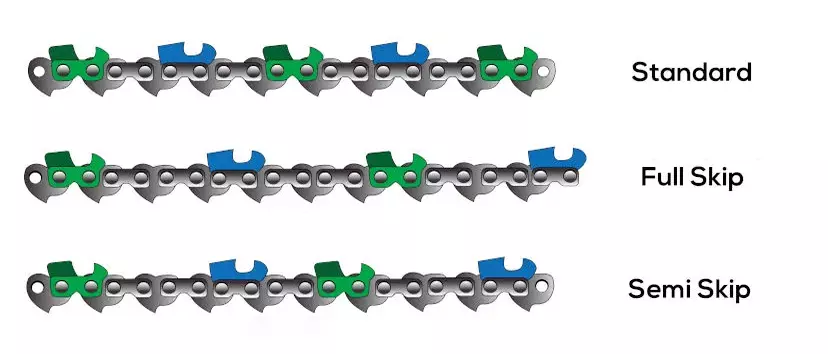
The aggressiveness of the chain determines how fast or slow it cuts through the wood. However, putting or using a more aggressive saw chain on a normal chainsaw will never give you better performance. It’s like putting shark teeth on a piranha - the bite won’t improve.
If you ensure your saw chain and saw are perfectly matched, your BISON chainsaw will always perform at its best.
Standard chains
These chains are considered the “least aggressive.” They have a tie strap between each cutter, allowing them to produce a smooth cut.
Semi-skip chain
A semi-skip chain is a hybrid of a full skip chain and a standard chain. They have two ties between each cutter, providing faster cutting than traditional chains.
Full skip chains
Full skip chains have three ties between each cutter, which makes them super aggressive! They are usually used for bars 24 inches or longer. The advantages of using a full skip chain include better chip clearance and faster sharpening time. But keep in mind that these chains create excessive vibration.
FAQs
What’s the ideal tightness of a chainsaw chain?
The chainsaw chain will naturally stretch and loosen on the guide bar during use. When using it, you must ensure it’s not too loose, as it won’t be as effective and could become dangerous. The tension should be checked regularly to minimize the risk to yourself before using the chainsaw. If the chain is too loose or very loose, it could come off from the bar, which could be dangerous considering how fast it spins.
To determine the ideal chain tension, lift it off the guide bar. The chain should be slightly loose, but you can’t pull the link off the chain bar. If the links still engage when you remove the chain, you know it’s tight enough. If you can pull the entire chain away from the chain bar and the links no longer engage, you need to increase the tension on the chainsaw. You should make sure not to tighten the chain too much. A small amount of play must be in the chain before you get to work. If the chain is too tight, you may break the chain during the operation.
It would help for complete information on tightening a chainsaw chain, as this will provide the customization information needed for your chainsaw.
Can you use a different brand of chain on your chainsaw?
Yes, you can use any chain brand on your chainsaw, but you need to ensure the chain meets these three requirements for the guide bar: pitch, gauge, and number of drive links.
Are chainsaw chains universal?
There is no universal chainsaw chain. The gauge and pitch are determined by the chainsaw you use. However, chainsaw chains of the same pitch, gauge, and chain length are interchangeable. You can have different blade styles, arrangements, and chains can even be made of different types of materials.
conclusion
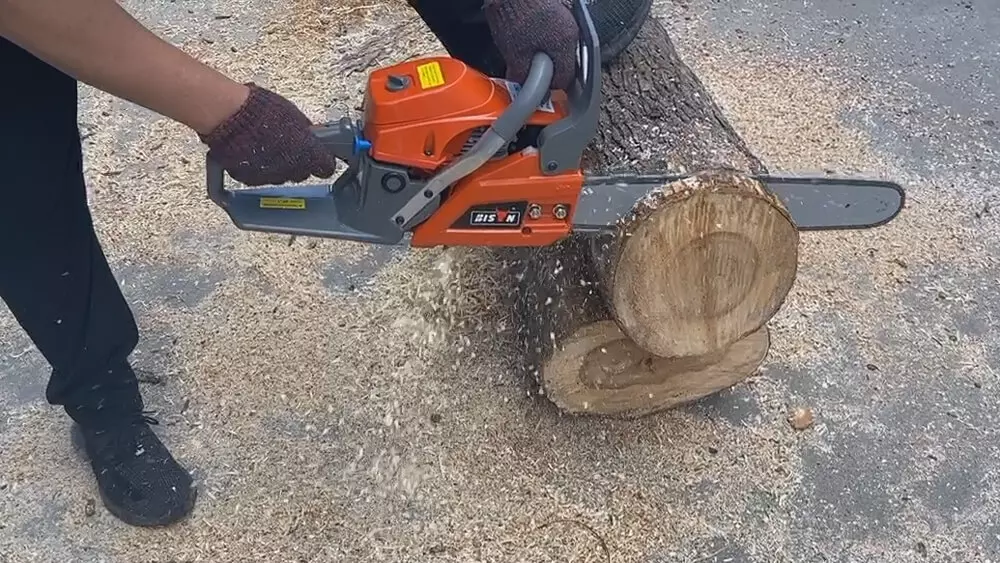
In conclusion, choosing the right chainsaw chain is just as important as selecting the chainsaw itself. It can significantly impact the tool's efficiency, the quality of the cut, and even the user's safety.
As a leading chainsaw manufacturer based in China, we understand these nuances better than most. Our commitment to quality and innovation ensures that we offer an extensive range of chainsaw chains, designed to meet various cutting needs.
Moreover, BISON experts is always available to guide you through the process of choosing the best chainsaw chain for your specific requirements. With us, you can rest assured that you're not just purchasing a product but investing in a solution that enhances your work efficiency and safety.
Thank you for taking the time to read this article, and we look forward to helping you make your chainsaw the best it can be!

